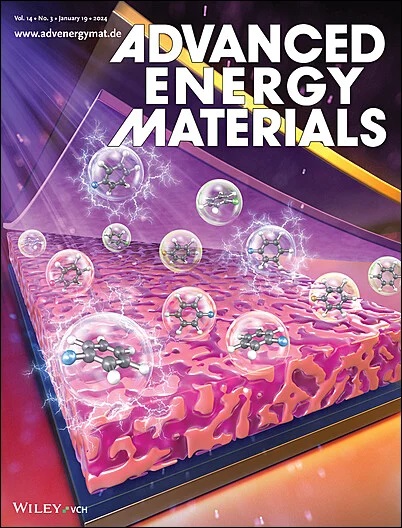可充电锌-空气电池高效NiFe基氧电催化剂的研究进展与挑战
IF 24.4
1区 材料科学
Q1 CHEMISTRY, PHYSICAL
引用次数: 0
摘要
设计具有高性价比、高活性的双功能电催化剂是加速可充电锌空气电池实际应用过程的重要特征。nfe基催化材料具有储量丰富、成本低、电子结构可调节、催化活性高等优点,是双功能电催化剂的可行候选材料。为了加快可充电锌空气电池中nfe基材料的产业化进程,有必要系统地探索其设计策略,以提高其双功能催化活性。本文首先介绍了可充电锌空气电池的工作原理、反应机理和面临的挑战,旨在了解阴极催化剂的设计标准。此外,还详细介绍了NiFe基催化剂的分类,并介绍了其设计策略。在此基础上,总结了NiFe基催化剂的设计策略,包括阴离子改性、阳离子掺杂、支撑效应、包埋效应和多组分结构,以提高锌空气电池的性能,使其具有高活性和持续稳定性。最后,对开发实用化nfe基电催化剂提出了一些个人见解。相信本文的研究成果将为指导未来可充电锌空气电池中NiFe基催化剂的研究进展提供有价值的见解。本文章由计算机程序翻译,如有差异,请以英文原文为准。
Advances and Challenges in Designing Efficient NiFe‐Based Oxygen Electrocatalysts for Rechargeable Zn–Air Batteries
Designing cost‐effective bifunctional electrocatalysts with high activity claims essential features for accelerating the practical application process of rechargeable Zn–air batteries. NiFe‐based catalytic materials are viable candidates for bifunctional electrocatalysts, benefiting from abundant reserves, low costs, adjustable electron structures, and high catalytic activities. To accelerate the industrialization process of NiFe‐based materials in rechargeable Zn–air batteries, it is necessary to systematically explore their design strategies for promoting bifunctional catalytic activities. This review first introduces the working principle, reaction mechanism, and challenges of rechargeable Zn–air batteries, which aim to understand the cathodic catalyst design criteria. Furthermore, the categorization of NiFe‐based catalysts is illustrated in detail to introduce the design strategy. Based on the understanding, the design strategy of NiFe‐based catalysts, including anionic modification, cation doping, supporting effect, embedding effect, and multi‐component construction, is summarized to boost the performance in rechargeable Zn–air batteries with high activity and sustained stability. Finally, some personal insights on developing practical NiFe‐based electrocatalysts are proposed. It is believed that this review can offer valuable insights for guiding future research on the advancement of NiFe‐based catalysts in rechargeable Zn–air batteries.
求助全文
通过发布文献求助,成功后即可免费获取论文全文。
去求助
来源期刊

Advanced Energy Materials
CHEMISTRY, PHYSICAL-ENERGY & FUELS
CiteScore
41.90
自引率
4.00%
发文量
889
审稿时长
1.4 months
期刊介绍:
Established in 2011, Advanced Energy Materials is an international, interdisciplinary, English-language journal that focuses on materials used in energy harvesting, conversion, and storage. It is regarded as a top-quality journal alongside Advanced Materials, Advanced Functional Materials, and Small.
With a 2022 Impact Factor of 27.8, Advanced Energy Materials is considered a prime source for the best energy-related research. The journal covers a wide range of topics in energy-related research, including organic and inorganic photovoltaics, batteries and supercapacitors, fuel cells, hydrogen generation and storage, thermoelectrics, water splitting and photocatalysis, solar fuels and thermosolar power, magnetocalorics, and piezoelectronics.
The readership of Advanced Energy Materials includes materials scientists, chemists, physicists, and engineers in both academia and industry. The journal is indexed in various databases and collections, such as Advanced Technologies & Aerospace Database, FIZ Karlsruhe, INSPEC (IET), Science Citation Index Expanded, Technology Collection, and Web of Science, among others.
 求助内容:
求助内容: 应助结果提醒方式:
应助结果提醒方式:


